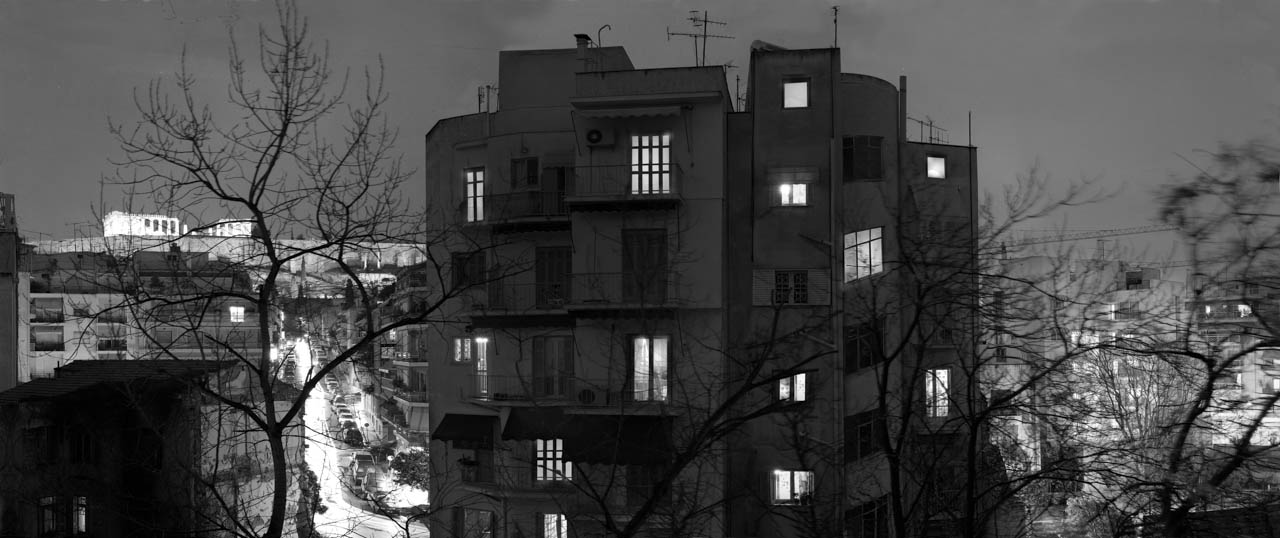
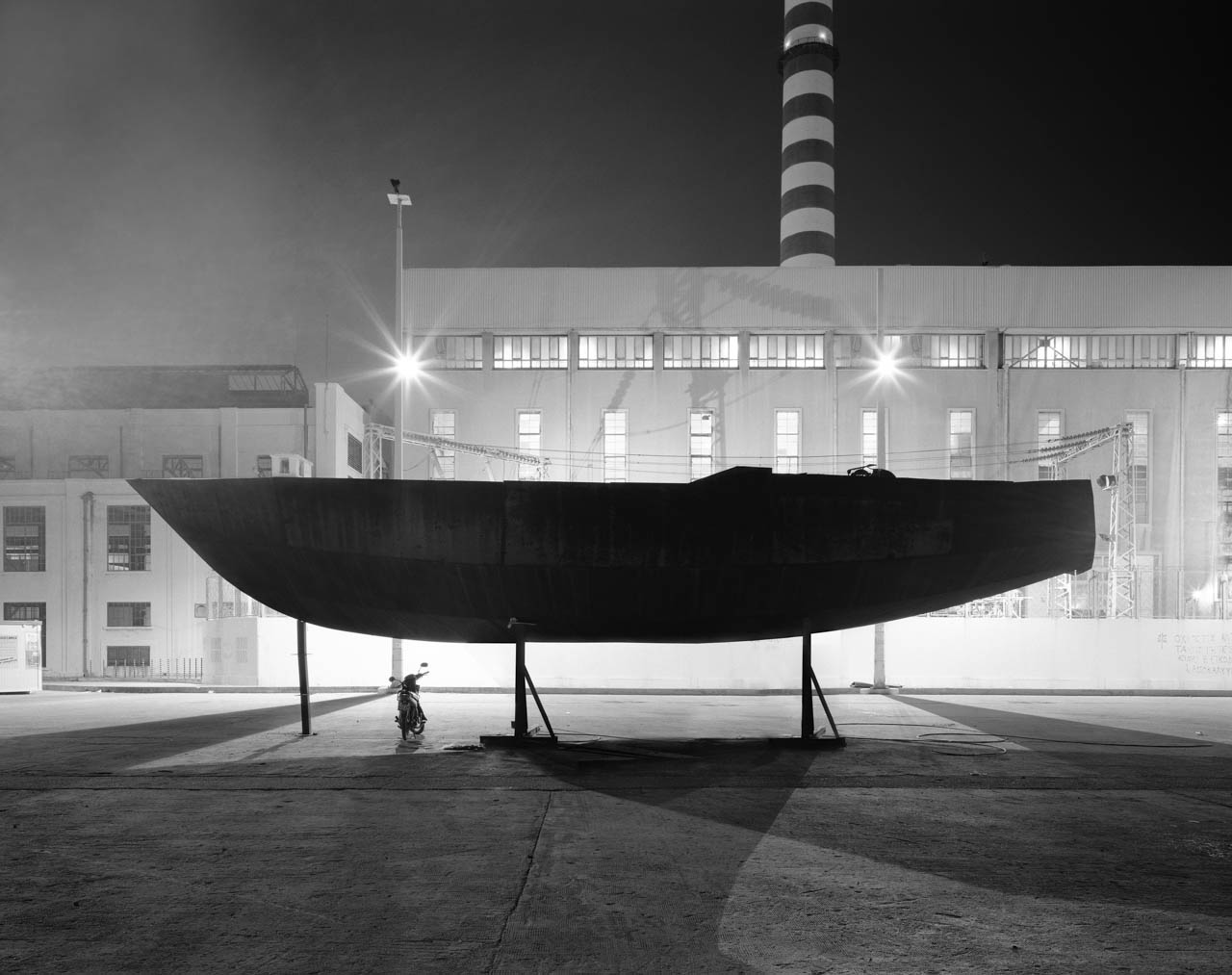

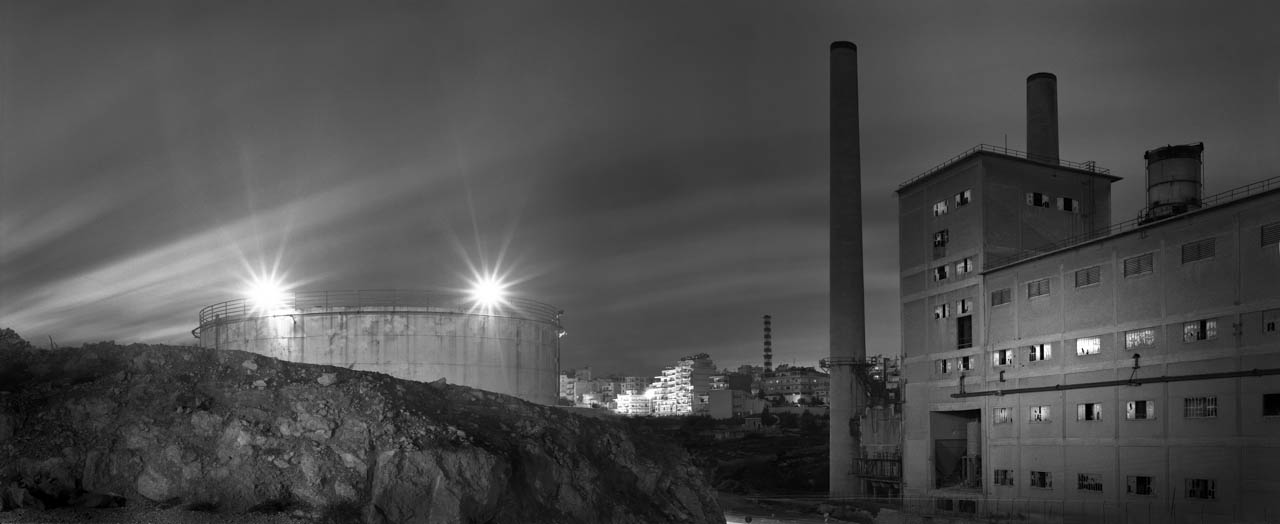
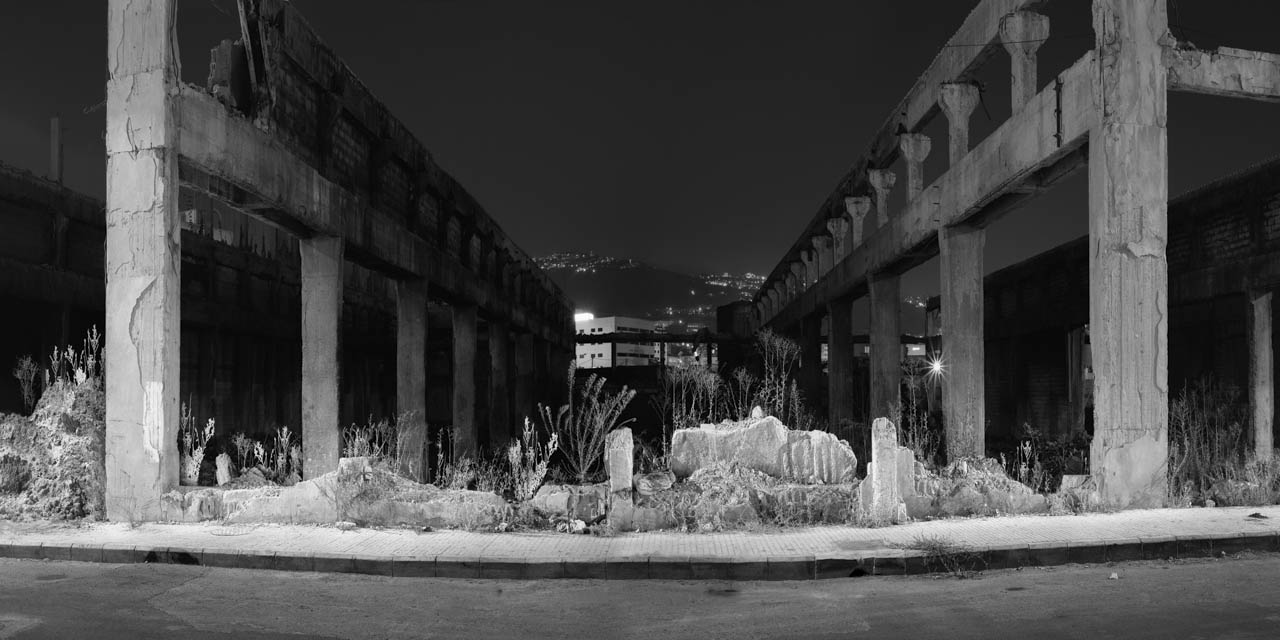


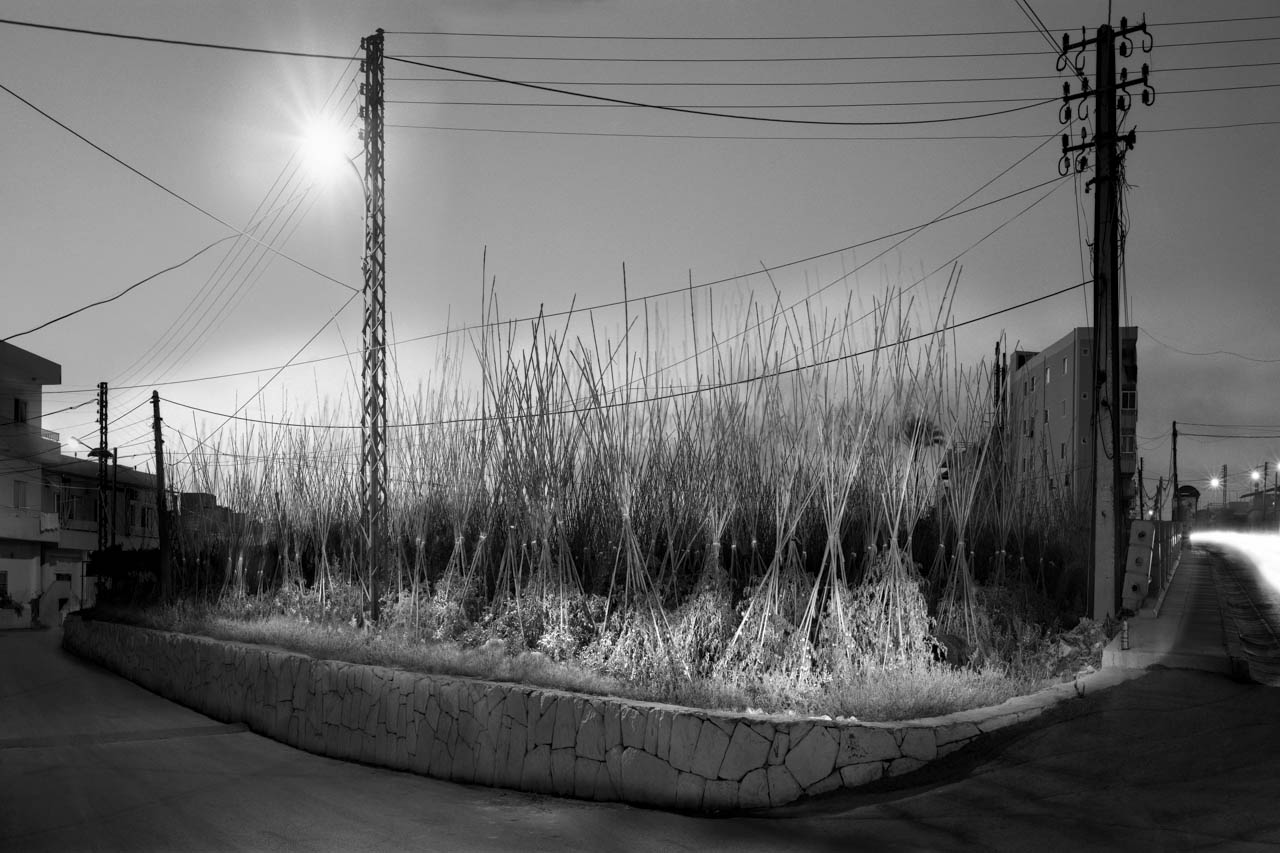
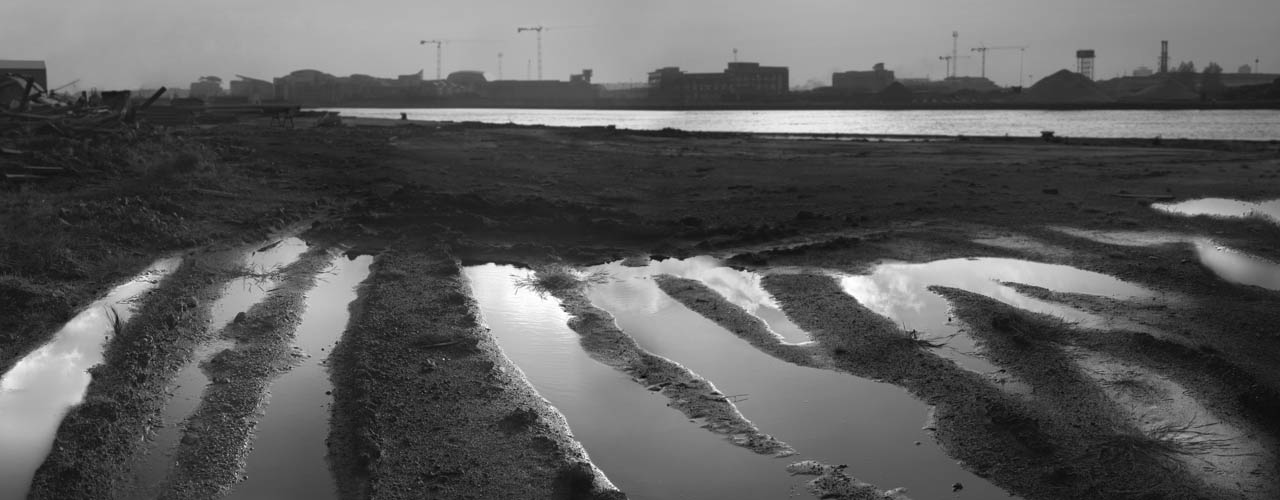



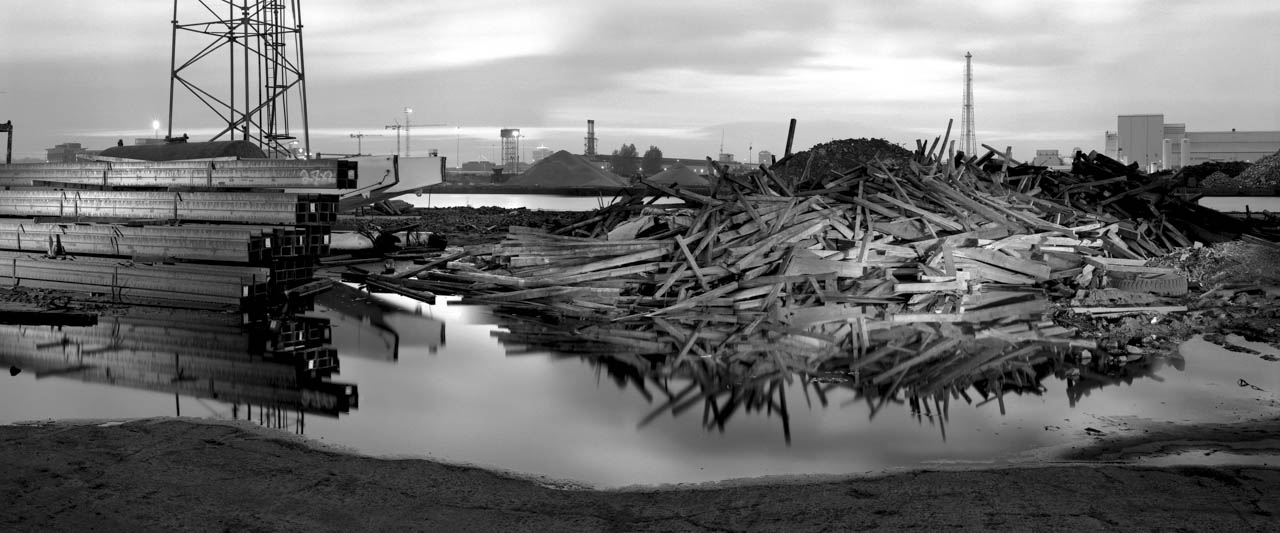
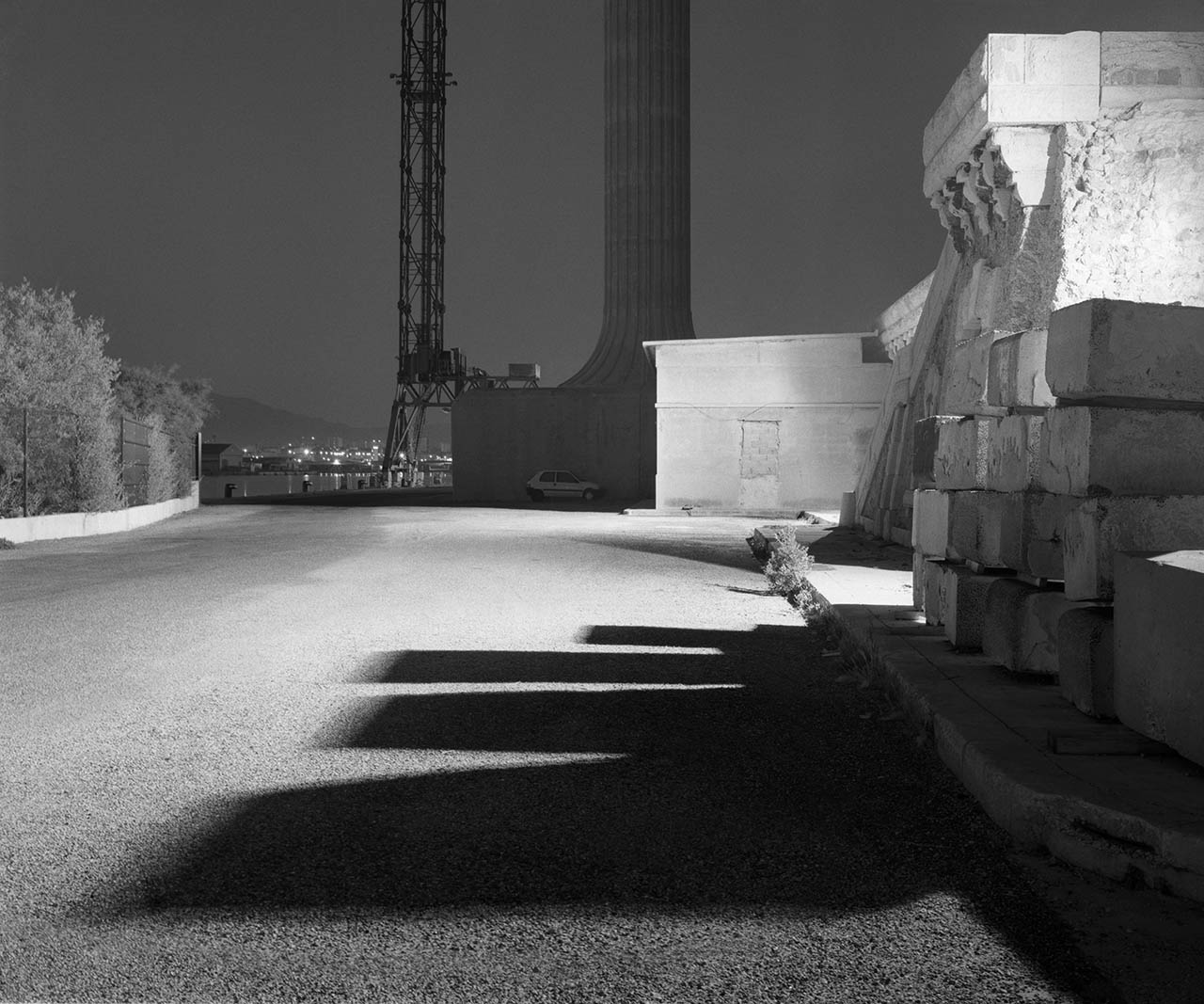
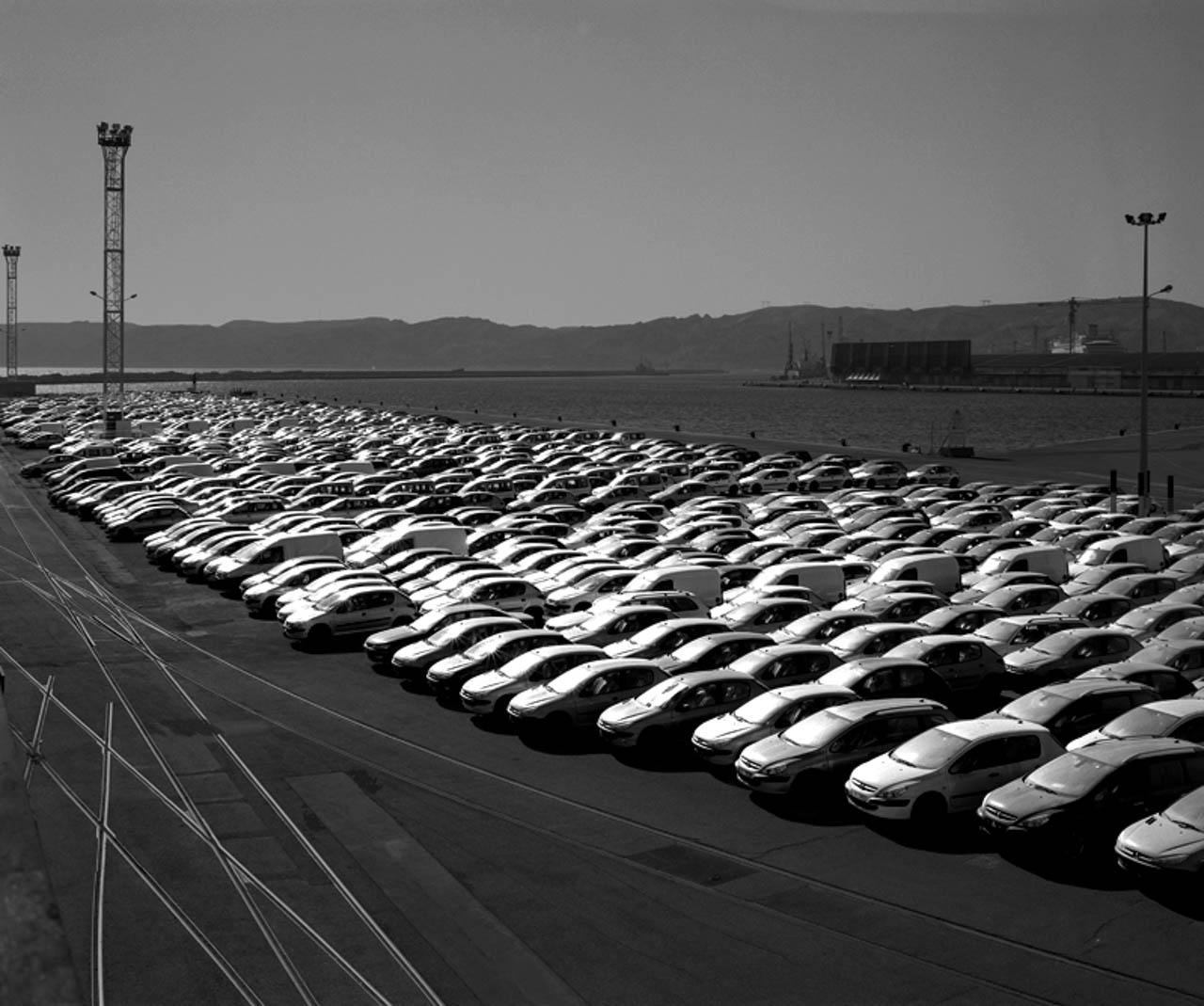
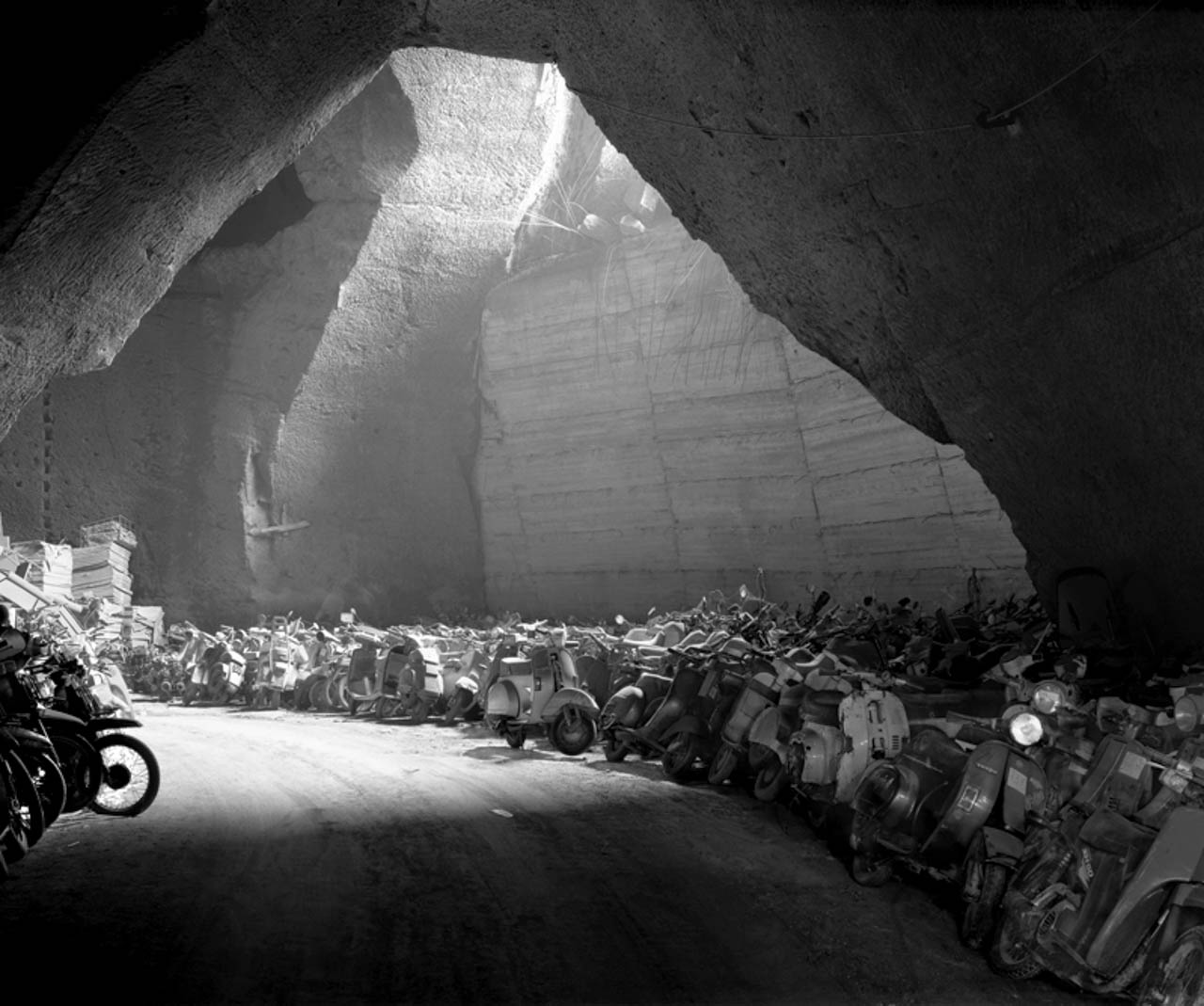
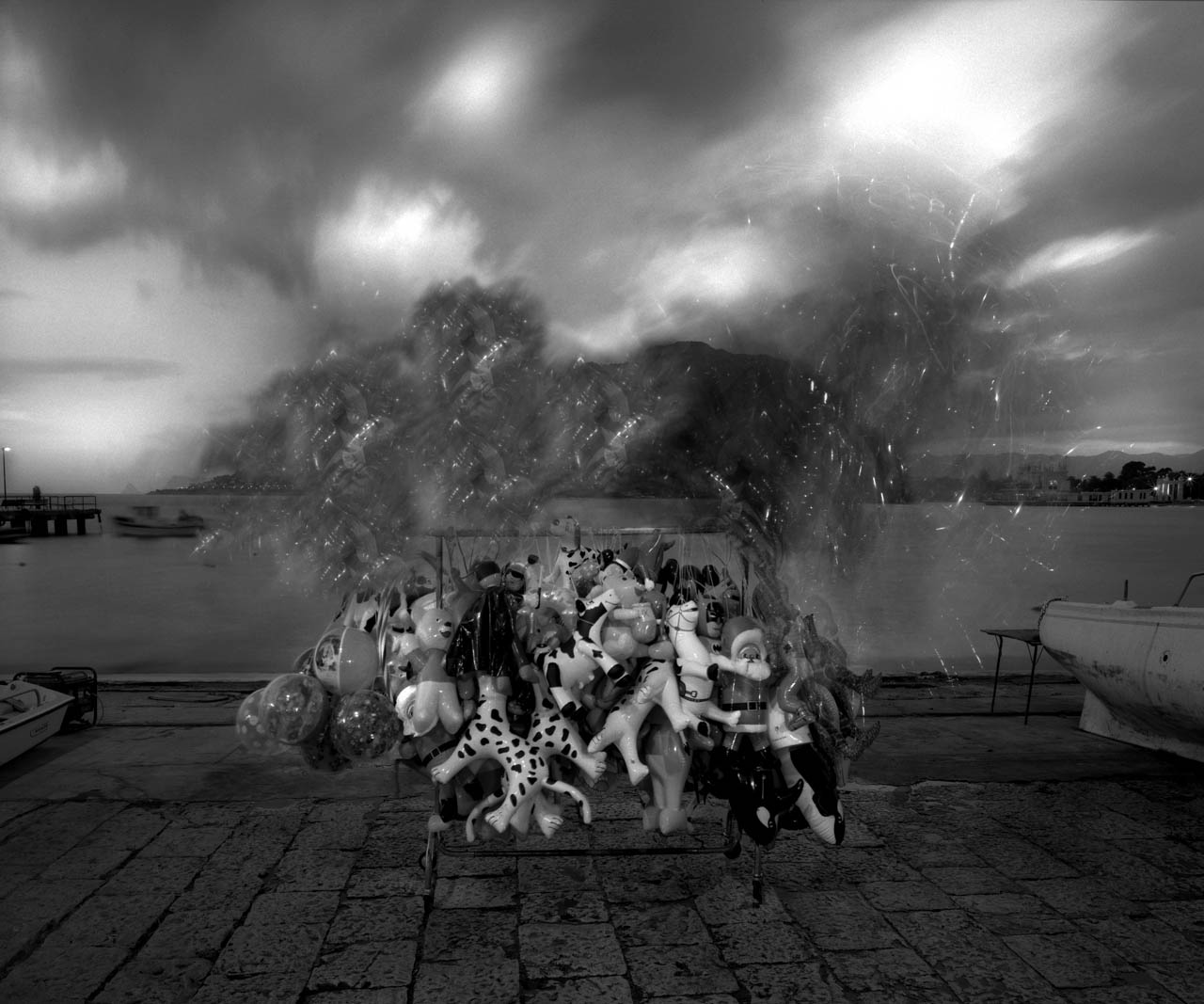
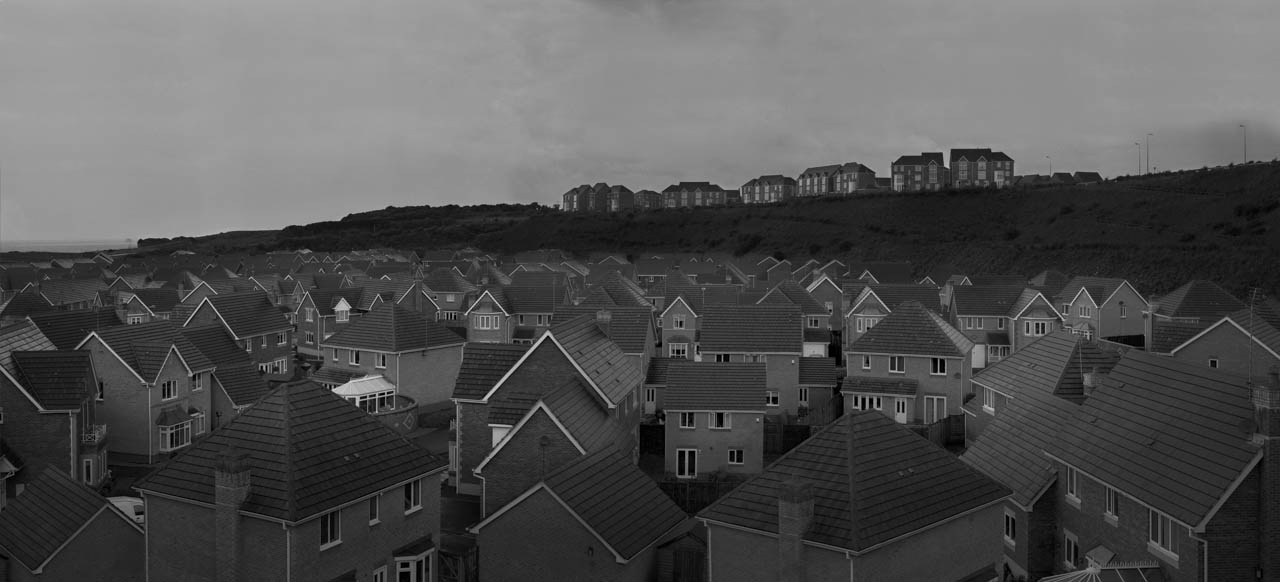
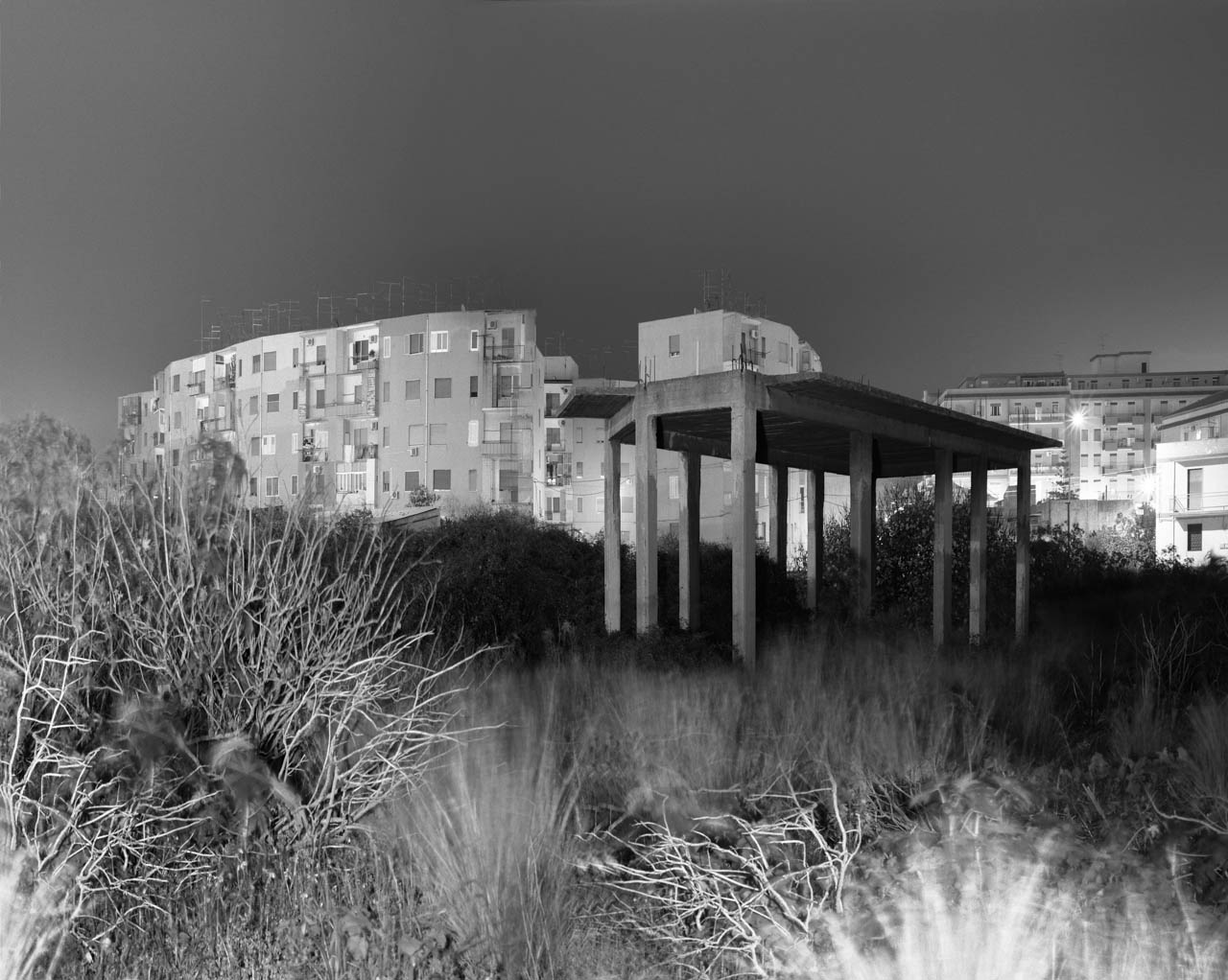
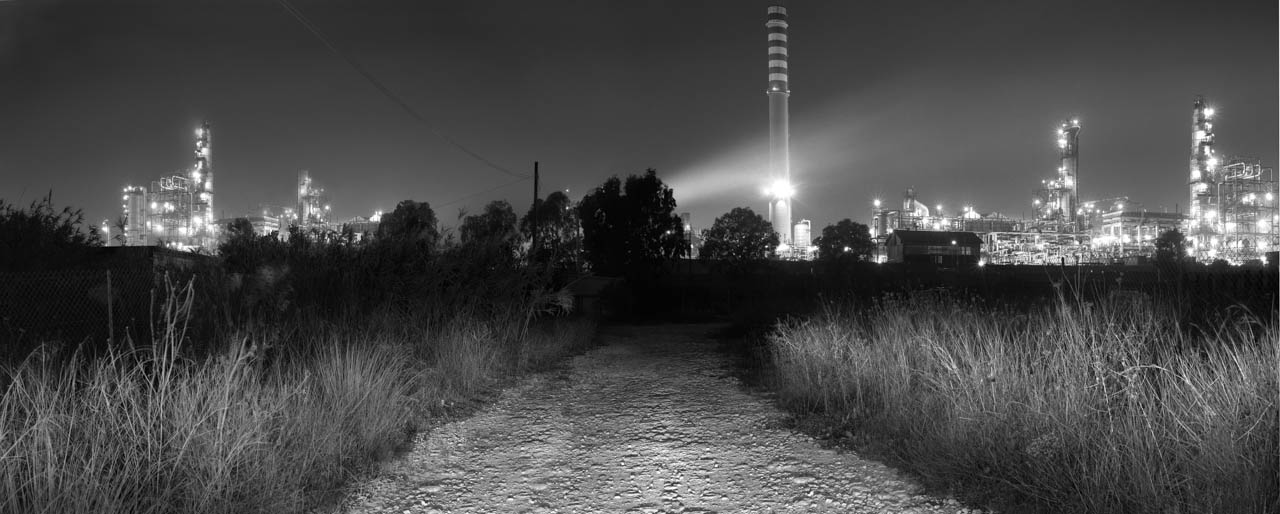
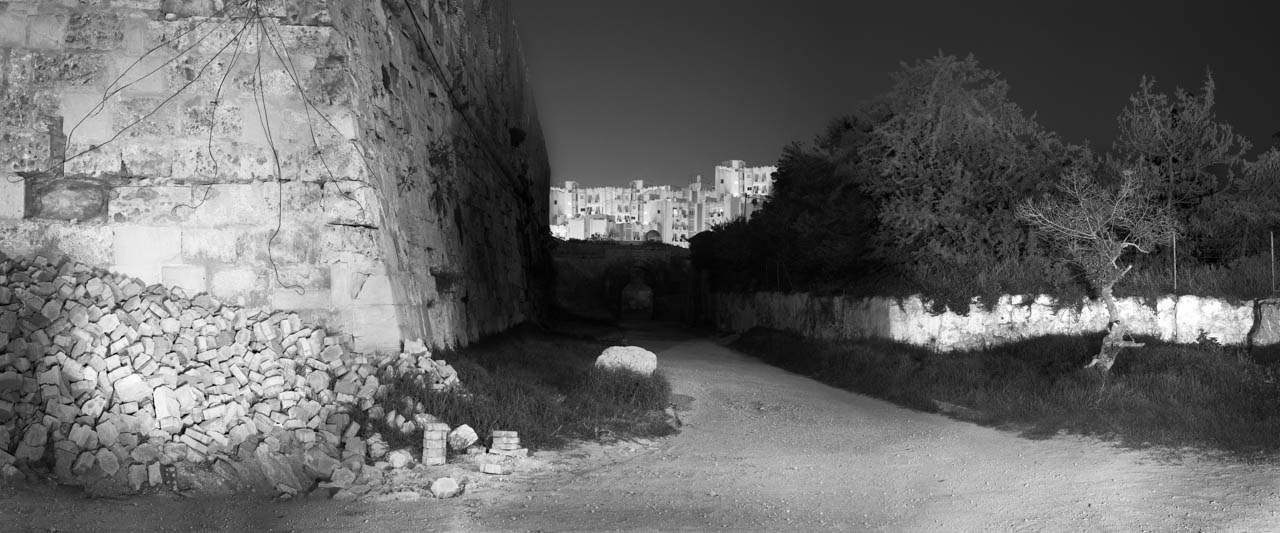
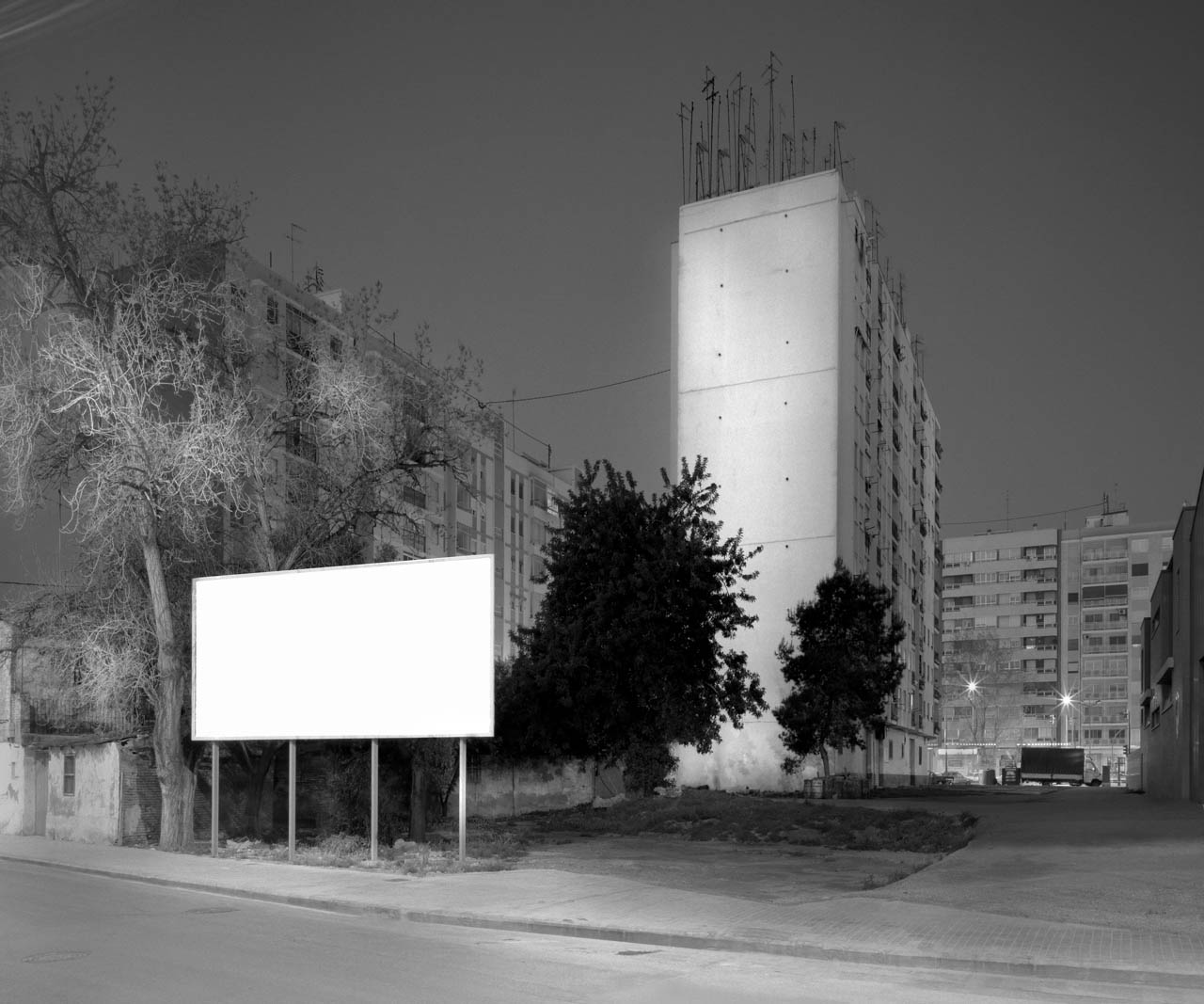

Over and over - installazione video in due proiettori, montaggio loop - 2006
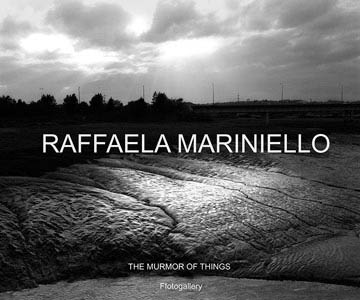
Jon Bird - settembre 2005
“Ultimately, Photography is subversive not when it frightens, repels, or even stigmatizes, but when it is pensive, when it thinks."
Roland Barthes
For the current generation, black-and-white photography is an anachronism
The Guardian, 18/8.05
It has been the recovery of the unseen that has been both the radical promise and the limitation of the documentary tradition – witness Brecht’s famous criticism of a photograph of the Krupps steel works, that it revealed nothing about the economic and social inequalities underpinning forms of production. Truth is an elusive (and illusory) goal of documentary realism. Despite claims for documentary as the representation of a politics, the ‘being-there’ or facticity of the image is no longer even a truth of appearance, so much happens in the apparatus of photographing and printing (to say nothing of the manipulative possibilities of digital imaging) that we have to seek elsewhere for the truth of the image. The matter of the politics of the image, with regard to any truth claims, is perhaps better sought elsewhere, in an ethics of the gaze. For Barthes, ‘truth’ is only ever found elsewhere – in the ‘punctum’ of the image: ‘it occurs in the field of the photographed thing like a supplement that is at once inevitable and delightful…’(4)
In some of Raffaela Mariniello’s earlier works, for example the collection ‘Bagnoli, una fabbrica’ (1991), ghostly figures hover or glide across the image, a discarded boot or glove lie embedded in the ground referencing patterns of manual labour and a history of photography leading from Rodchenko to Man Ray. More recently, in her commissioned photo-essay of the city of Naples (2001), or this current body of work, the literalness of the Bagnoli series and a formal aesthetic close to the picturesque has been replaced by a richer and more complexly connotational visual rhetoric. These are still non-places, disregarded locations on the edge of industrial or social activity overlaid with an aura of melancholy, but the juxtaposition of objects and context shift meaning towards ambivalence and contradiction. As such, and given the recurrence of a metaphorics of the body, they gesture towards Surrealisms investment in the object(s) of desire, of the fascination that Surrealist photographers (particularly Man Ray) exhibited for the Readymade, and the double meaning and symbolic significance in the coding of reality. Often this was achieved through unlikely combinations, the paradigmatic ‘chance encounter’, and in Mariniello’s positioning of foreground object(s) and background location there is a similar dissonance opening the image to the action of metonymy, to chains of signification that annex it to a much wider range of cultural reference.
Raffaela Mariniello is not interested in the actual specifics of a place – the photographic tradition derived from a topographical inquiry into the scientific mapping of space. Geo-cultural signs of difference are far less apparent than the formal and atmospheric quality of a generalised sense of location. Whether the subject is South Wales or a Mediterranean port matters less than the effects of light on water, the contrast of shadow and illumination playing across a surface, or the interplay of organic and industrial or architectural form. There are, however, some clues to aid identification: a line of tiled rooftops and gardens, gathered net curtains, a dry stone wall, certain discernable varieties of vegetation implying a particular (hot) climate, a gasometer, an apartment block, all of which configure a sense of place and suggest patterns of everyday life and work – of how it might be to stand where the photographer stood to take the shot. But these are secondary characteristics to a narrative of displacement and uncertainty. These images are no more ‘views’ in the conventional sense – the singularity of the world presented to the camera – than they are typical landscapes in the art historical sense. I suspect that, in her reconnaissance trips prior to shooting, Mariniello isn’t simply looking for a combination of features, for example, the interface between the natural and the urban, but also how a place is imprinted corporeally upon the subject – a sense of unease or anxiety, a disjunction of form and function, the loss of a habitus – all of which subvert any voyeuristic tendency. These are places which return our gaze and challenge our intrusion.
The temporal dimension of Raffaela Mariniello’s images invokes both the momentary and the durational potential of photography. Mostly, as has been remarked, she shoots as natural light is receding at the onset of the night. The actual time of year is less obvious: there are few suggestions of seasonal change, perhaps the months between early summer and mid-autumn mark the calendrical span. It is the period of time that the shutter is open that marks the action of chronometric time, perceivable in the blurring and softening around the edges of forms, or across the surface of water – time segued into movement. In an earlier series she acknowledges the history of time-lapse photography, of Muybridge and Marey, but in her current photographic work there is almost the opposite effect to the analysis of movement through its constitutive moments. If anything, movement conceals rather than reveals as trees and bushes become cloud-like or adopt more apparitional guises, water congeals, and foreground objects loose their specificity and become uncanny. (Another source might be the Italian Futurist photographers, Arturo and Anton Giulio Bragaglia who experimented with long exposure times of moving figures in order to record an overall impression or gestalt of bodily action and gesture.) With Mariniello it is the contrast between duration and stillness that can be taken as metonymic of forms of experience – of being in the world, and of an inner life that parallels sensory perception. Simply put, this can be seen as a device to combat the photograph’s instantaneity – of getting time back into the image and, thus, holding the viewers attention. How long do we look at a photograph: a second or two, ten seconds, twenty, a minute…Generally out attention span is far less than when viewing a painting – the immediacy and profusion of reproductive imagery works against a more concentrated and extended encounter. Photographers have always employed devices and strategies to arrest and hold the viewer’s gaze, from detail and scientific accuracy, defamiliarisation, shock, scale, to framing. montage, the use of text, etc., all elements of a rich formal and conceptual aesthetic. However, photography (like film and unlike painting) reminds us of our investment in looking and of the inadequacy of vision, that the camera ‘sees’ what the eye cannot. There is also, of course, the unconscious – the structure of looking that embeds an image within memory and desire.
It is a characteristic of sight to look for order and pattern – for us to strive to make sense of our visual worlds however chaotic or unregulated things might appear. We relate the unknown to the familiar in order to locate ourselves, and our primary source of reference is the body. We see the body everywhere: whole or in part, factually or metaphorically, as internal organs, skin, gesture and movement, action and repose. When I contemplate Raffaela Mariniello’s photograph of the corrugated and lined surface of a mudbank revealed at low tide in Cardiff bay, or the intertwined coils of tubing on the dockside at Palermo, or the contrast between the unmade foreground area with its pools of water, weeds and stones and the regulated apartment blocks, TV aerials and street lamps of Valencia, my response is partly filtered through an empathetic and corporeal familiarity with the body’s limitations and potential. And, following Freud, a primary reference lies in our earliest memories, of our first experiences of being in the world and the pleasures and pains accompanying childhood. This is when the boundaries between self and other, body and space, inside and outside are in the process of formation and provide a template for adult experience. Visual representations that awaken these memories have a special hold over our attention – paths that lead into pictorial space, walls or enclosures defining one area from another, changes in the substance of things from solid to liquid or gas, divisions between interior and exterior – such distinctions repeat early learning experiences as we struggled to make sense and order of the unknown and the new. The philosopher Luce Irigary argues that this formative period marks the interrelation of sight and touch, a connection that the history of western philosophy has concealed under the privileging of vision. For her, the metaphor of light as truth is an idealisation that represses the fact of sexual difference. In her account, light is textured, tactile, and our sense of sight is implicated fundamentally in our sense of touch, a formulation that implies a corporeal relation to the world rather than the construction of an objective and disembodied subject surveying the visual field.(5) What I am suggesting, then, is that the affect of Mariniello’s images, as is the case with much of the art that holds our attention and lingers in the memory, is a contrary reminder of the body’s presence despite its (literal) absence from the image: of recognition and unfamiliarity, reassurance and uncertainty, form and void, movement and repose, of darkness and the light.
‘Between photographer and subject, there has to be a distance’ asserts Sontag (6), thus contributing to the debate that has always questioned the voyeurism of the photographic relation. This is unavoidable whenever the focus is upon the human subject, individuated or ‘en masse’, as an inevitable intrusion and expression of a discourse of power; but what of the ethical dimension of other genres of photographic representation, particularly landscape? Here the alliance with the growth and spread of mass tourism is the clearest evidence of the socio-economic consequences of a desire for possession. Kodak used to advertise potential sites for the camera’s gaze and today’s beauty spots carry instructions for the amateur photographer on where to stand for the optimum point-of-view. No landscape, whether natural or urban, wild, desolate or ordered, can easily resist the lure of the picturesque, the sublime, the symbolic or the moralistic. Even those projects that started out as systematic documents of form, function, or a way of life – Atget, Robert Frank, the Bechers – are exposed in their very indexicality as memorials to something lost; fragments adrift in meaning signifying either a generalised ‘past’ (nostalgic, sentimental), or annexed to particular narratives of history. It was Walter Benjamin who saw in Atget not only the forerunner to surrealist photography, but also a body of work that, in its repetitiveness, ordinariness and absence of human presence, destroyed the auratic object: ‘the city in these pictures looks cleared out, like a lodging that has not yet found a new tenant.’ (7)
Like her predecessors, Raffaela Mariniello works in series – the City of Naples, the ports of the Mediterranean, Cardiff – and most of her images suggest the proximity of industrialisation and the anonymity of the overlooked, forms of production and their detritus common to a global economic system. Similarly, the domestic habitus is only rarely specified but figured as a mass of identical units comprising a housing block or estate. Naming the country and city of origin – Valencia, Naples, Palermo, Cardiff – does nothing to dispel the impression of an enclosed and regulated existence, indeed the caption could equally imply a prison or barracks, and the only interruption to this regime of order comes with two pictures of houses in Penarth Marina, one of them an interior shot. But even here the strict geometry of the net curtains and radiator belies any suggestion of a random or personalised taste at work, we predict an identical arrangement in every house on the block. In fact, the details that interrupt what might otherwise become an orthodox rhetoric describing the costs of industrial modernisation are of a more aberrant kind. Cracks in a pavement and stains on a wall; a profusion of wild flowers bordering a road or fronting an estate; the silvery sheen of a puddle at night; discarded ropes and sprouting iron spikes decorating a Bari dockside; a collapsed stone wall on the outskirts of Beirut; a mountain of some dark, dense material ominously occupying the foreground of Cardiff port or the delicate tracery of barbed wire and netting across the bay; a lonely motorbike incongruously sheltering under a boat hull outside a factory in Athens; an enigmatic, table-like concrete structure amidst bushes and grasses at Syracuse, Sicily and a rough path through shrubland leading to a refinery are all juxtapositions suggesting endless narrative possibilities. But these images also tell a story about photography: about the camera as both a technical and a social apparatus, about the photograph as a form of projective geometry closely linked to the perspectival system of representation, (witness the number of Mariniello’s images that either ‘stage’ a scene, or lead the eye into pictorial space), as a privileged relation to the real, (in Christian Metz’s expression ‘a cut inside the referent’) (8) and as an expression of the visible world that can still capture us with its mysteries and revelations.
JON BIRD
September 2005
REFERENCES
1. Roland Barthes Camera Lucida: Reflections on Photography, trans. Richard Howard, New York 1981, p38
2. T.J.Clark The Painting of Modern Life: Paris in the Art of Manet and his Followers, London 1985
3. Susan Sontag On Photography, London 1978, p55-56
4. Barthes, p47
5. see Cathryn Vasseleu Textures of Light: Vision and Touch in Irigaray, Levinas and Merleau-Ponty, London 1998
6. Sontag, p13
7. Walter Benjamin ‘A Small History of Photography’ in One-Way Street, trans. Edmond Jephcott and Kingsley Shorter, London 1979, p251
8. Christian Metz ‘Photography and Fetish’ in Carol Squiers (ed) The Critical Image: Essays on Photography, Seattle 1990

Raffaela Mariniello works against the grain of much contemporary photography which is dominated by large-scale, colour, and digitally manipulated imageryReferencing a history of documentary, landscape and black-and-white photography and working with a 1950s Linhof 4” x 5” plate camera using a long exposure time, she is admirably unfashionable and serious in her approach to her subject matter Only recently has she begun to experiment with other formats, specifically video, taking the implied movement that characterises many of her images – wind disturbing the outline of trees and bushes or blurring the shape of cloth or sails, the strange effect a fifteen minute exposure has upon the surface of water as the undulations of swell and current merge into an opaque smear – into a filmic dimension with multi-screen projections. Her photographs of the run-down areas of dockyards and ports around the Mediterranean and, most recently, Cardiff in S.Wales, or of those inbetween locations that demarcate the edges and borders of urban conurbations, for example, of her home city of Naples, are distinguished by a series of formal and conceptual oppositions: dark/light, nature/industry, land/water, stillness/movement, absence/presence, foreground/background, public/private…
The genre is landscape derived from the Northern European tradition of Netherlandish and British painting of the 17th and 18th centuries. This was when landscape shed its classical roots as artists began to depict the gradual domestication and organization of nature as the boundaries between country and city shifted and shrank, industry replaced the reliance upon an agrarian economy invading and disrupting the countryside with new technologies of ownership and production – the working mill, the merchant ship and the canal, the restructuring of agriculture, the mine and the factory. The earliest photographic archives document rapidly changing notions of the natural and the urban, revealing the constructed and intertextual character of such formulations. Even the most aestheticised and formal of representations attest to a politics of culture at work.
La prima e ovvia osservazione sull’attività fotografica di Raffaela Mariniello, oltre all’assenza della figura umana, è che l’immagine non si lascia ricondurre a fonte di informazione. Certo i soggetti sono in linea di massima riconoscibili, ma i loro particolari si presentano intriganti per l’ambiguità o per l’autonomia rispetto al contesto: che funzione avranno mai i tubi in plastica avvolti a spirale in primo piano rispetto all’area portuale di Palermo, o una raccolta di fusti di metallo lungo una via di Beirut, o quella che sembra essere un’esplosione di materiali appesi a una sbarra in un’altra area del porto di Palermo? Che cosa ci fanno tutti quei motorini abbandonati in una grotta a Napoli – cimitero di fantasie da dolce vita dei giovani italiani? Mentre la luce, secondo la tradizione filosofica occidentale, rivela il mondo conoscibile, lo sguardo di Raffaela Mariniello si volge all’indietro nell’antro oscuro di una grotta. È infatti il mito platonico della caverna che viene rappresentato – un interno desolato del quartiere di Billybanks a Cardiff che incornicia le luci della costa in lontananza - e sottolineato con ironia nella fotografia dei motorini confiscati. Non sono ragione e verità ad essere illuminate, ma un commento malinconico sulle limitazioni di certe libertà e un commento ironico sull’abbandono della dimensione utopistica della modernità sociale.
Perhaps the first and most obvious observation on Raffaela Mariniello’s practice of photography, beyond the absence of the human figure, is that the image is not, primarily, informational. Of course we recognise the subject matter in general terms, but much of the detail is either intriguingly ambiguous or at odds with its context: what might be the function of coiled plastic tubing occupying the foreground of the dockyard at Palermo, or an accumulation of metal drums lining a roadside in Beirut, or what appears to be an explosion of material hanging from a rail on another dockside at Palermo, and what are all those abandoned scooters doing in a cave in Naples – a graveyard to the dolce vitae fantasies of Italian youth. If light, in the Western philosophical tradition, reveals a knowable world, then Mariniello’s gaze is turned back into the cave’s shadowy interior. Indeed, Plato’s allegory of the cave is both figured – a barren interior space at Billybanks, Cardiff framing the distant lights of the far shoreline - and ironically restated in her photograph of the confiscated scooters; it is not reason or truth illuminated here but a melancholic commentary upon the curtailment of certain freedoms and a wry commentary upon the abandonment of the utopian dimension of social modernity.
In geographical terms we are on the periphery, in the margins looking towards…,well what? Certainly not towards the ideal city of either the classical or the modern imaginary. Despite various intimations of a rational social architecture in the housing and apartment blocks or varieties of industrial production, there is no promise of release or fulfilment over the horizon, just, we suspect, more of the same. This is the underbelly of a modernity characterised by uneven development and the repetitiveness of everyday life.
In his novel Les Miserables, Victor Hugo described the particular attraction of the inbetween, the area where the outskirts of the city and the country intersected, the ‘banlieue’: ‘To observe the banlieue is to observe an amphibian. End of trees, beginning of roofs, end of grass, beginning of paving tones, end of ploughed fields, beginning of shops, the end of the beaten track, the beginning of the passions, the end of the murmur of things divine, the beginning of the noise of humankind…’ The art historian, T.J. Clark developed this theme in his account of modernist painting, ‘The Painting of Modern Life, arguing that the banlieue was the territory of ‘ragpickers, gypsies, and gasometers’, the kind of melancholic spaces pictured by Van Gogh in his small painting ‘The Outskirts of Paris (1886).(2) Here the outline of distant buildings, factories and warehouses, provides a backdrop to the remnants of nature under duress – clumps of grass and weeds, a broken fence, paths constructed from smeared paint, a gaslamp and a few desultory figures. And a curiosity for the exoticism of the everyday also extended to photography at this time; Susan Sontag compares the photographer to that ubiquitous symbol of late 19th century bourgeois city life, the ‘flaneur’: ‘The photographer is an armed version of the solitary walker reconnoitring, stalking, cruising the urban inferno, the voyeuristic stroller who discovers the city as a landscape of voluptuous extremes’. Like the flaneur, it is not the mainstream that attracts the gaze, but the city’s ‘dark seamy corners, its neglected populations…’(3)
All of these elements, apart from the figure, are present in Raffaela Mariniello’s working method and aesthetic language. Indeed, her own account of photographing the outskirts of Naples has a Hugoesque quality, the ‘ragpickers and gypsies’ transformed into “bag-snatchers and drug addicts” as she worked in a constant state of apprehension, alert to the peculiar charms and threats of an urban landscape that carries the trace of the natural. A poetics of edges, borders and boundaries, of the seepage of the organic into the industrial, of paths leading nowhere or merging into shadow, billboards and windows blanked out, their messages of consumption or activity erased by the camera’s flash, and everywhere the proximity of water – spreading in puddles, filling the cracks and fissures of overworked or abandoned dockyards, or separating a harbour from distant buildings and the sea beyond. But there is no suggestion here of an oceanic sublime, an immense and ever-changing moving force, rather water is surface, light, reflection, separation, a milky, sometimes opalescent division between foreground and distance, or a silvery infill of the crevasses and concavities that are the traces of labour and industry. The long exposure time of each image – anything from twenty seconds to fifteen minutes – transforms any residual movement into a blur so that areas of water, vehicles on a road, wind rustling through trees and bushes creates spaces of uncertainty in the visual field haunted by the ghostly presence of time’s impress upon the body.
In some examples the combination of a long exposure and use of flash results in the elimination of detail leaving a totally blank white surface which functions as an anamorphic intrusion disrupting the coherence of the image and arresting our gaze. In fact the tonal variations, (some of which are achieved in the darkroom through overdeveloping and masking) – the photographic equivalent to the painters use of chiaroscuro – distort recessional perspective, confusing distance and spatial relationships already unstable through the absence of the human figure to provide measure and scale.
Raffaela Mariniello’s depictions of water reverse the usual cultural associations with a life-giving and regenerative force, metaphorically linked to the human subject, whose rhythmic movement – the ebb and flow of the tide acting under gravitational pressure – echoes our own inner patterns, a connection that has always carried reproductive and gendered associations. Her blurred seas, estuaries and harbour waters suggest a frozen surface, the sludge-like heaviness of partly solidified liquid, while smaller areas have the precision of polished steel absorbing all available light to create another cut into these urban wastelands. In some examples this can be read as industrial effluent – oil, or something of a more sinister, chemical nature. What is consistent is the implication that not much in the way of sea-life could thrive here, this is water infected by the processes and detritus of manufacturing and production. Such considerations raise questions about the social and political ‘content’ of the image that are the familiar territory of forms of critical realism. I don’t think that this is the intention here, but the accumulative effect of these images is of a particular and committed portrayal of urban landscape, a mournful and disenchanted reflection upon the world which comes close to allegory.
Formally each image has a similar structure: “My photographs always have a foreground and a background”. What occupies the foreground is either a road or path leading into pictorial space, water, references to nature – trees or bushes, grass, weeds, earthmounds and sandbanks, domestic or industrial objects, non-descript building materials - orifices and protrubrances that function as metaphors for the body. Backgrounds mostly feature signs of industry or, occasionally housing, a rare intrusion of domestic space into these desolate vistas. Walls, railings and fencing enclose or connect foreground to background and the only evidence of a human presence, apart from our memorialisation in the trace of labour, is in the lit windows of a distant building.
All of these sites are documented as natural light fades and artificial illumination takes over, the hours of twilight and dusk (the ‘darker shade of twilight’). Twilight is ‘an intermediate condition or period….before or after full development’; ‘dim, obscure, shadowy’, that time of the day when vision plays tricks with perception, darkness envelops space and contracts distance and street lights flare like stars or caress the surfaces of form and matter. Reconnoitering by day, she selects her shot and returns as the evening descends, relying upon a combination of street lighting, photolamps and flash to supplement the rapidly diminishing daylight and to throw the foreground into relief creating Caravaggioesque contrasts and oppositions. Yet despite the actual or imagined dangers of these abandoned or peripheral locations, any threat is not of a theatrical or melodramatic order – we don’t anticipate a corpse half-concealed under a pile of rubble or a hand to emerge from the water, or some other body part hidden in the bushes – this is not David Lynch territory, more a sense of contingency and the overlooked. No, the crimes that have been committed are, rather, of omission: of the discarded, the ignored, the remaindered, of what is left after economic and social regimes have moved on. (And, since Barthes seminal writings on photography, particularly Camera Lucida, the photographic affect is consistently associated with feelings of mourning, melancholia and loss.) We could pursue the criminal metaphor further, finding in her method something analogous to a forensic investigation; searching for the right location, returning to the site with the relevant equipment, setting-up the investigative apparatus, recording the scene. The clues are there already waiting to be uncovered, the incidental and banal character of the subject adding to the deductive observation of the significant point-of-view, then the necessity for a long exposure to capture all the available light, the camera lens penetrating even those areas not immediately perceivable to the naked eye. This, then, is the opposite of the immediacy of most photo-journalism and the veracity of documentary, rather, it is photography as performative event. As such, there are references to the art practices of the 1960s and 1970, for example in the work of Dan Graham (the ‘Homes for America’ project) or Ed Ruscha (‘Gasoline Stations’ or the ‘Sunset Strip’ series).
Conceptual artists explorations of the photographic image have significantly influenced both the approach and subject matter of much recent lens-based practice, from a concern with the category of the everyday (first explored in the canonical works of Atget, Evans and Sander and then reinterpreted as the abject or dysfunctional side of social relations in the work of Nan Goldin, Wolfgang Tilmans, Richard Billingham and others) to the status of the indexicality of the photographic sign: of what is shown and concealed in the recording process itself. What Mariniello’s images present – that is, their articulation of a regime of visualisation – is the unseen, a spectral vision of an abandoned hinterland haunted by the memories of other histories, other lives. Although her titles annex the image to documentary, their content and structure (formal, technical, conceptual) suggest a more flexible approach to generical boundaries.